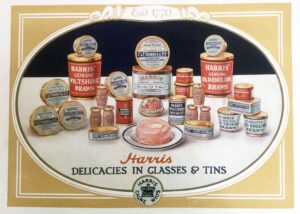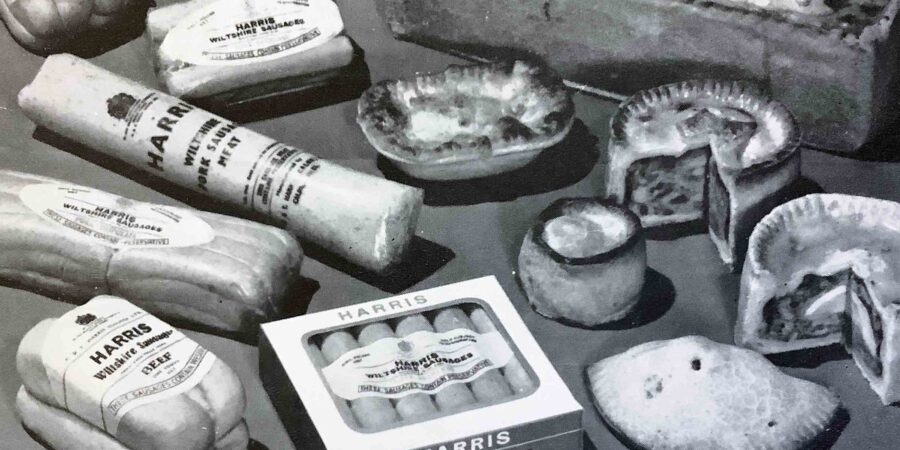What am I working on? I’ll tell you. A new book which I had planned well before lockdown. A subject very close to home, and, to some extent, ideal for lockdown. Material pretty well on my doorstep, and people to help with research accessible by email, Facetime or zoom.
Autumn 2019, I decided to write a history of C&T Harris (Calne) Ltd. I am a trustee of Calne Heritage Centre and know it has a huge amount of material relating to the factory, particularly photographs– including a number of collections donated by families of former employees. A real treasure trove of the working life of the factory that was famous for its bacon, sausages and pork pies around the world.
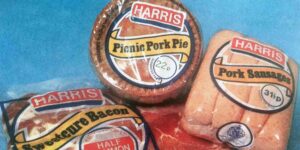
An illustrated history, I thought. Plenty of pictures dating from c1900 to 1986 encompassing the factory being built and later being demolished; workers in the various departments from slaughterhouse to sausage stringing. Colourful adverts, recipes for products – even one for the special puff pastry for M&S. As I researched the subject and worked my way through books and folders and albums, to assess the material, I felt confident about writing a book proposal.
In February, I sent the proposal with sample images, to Amberley Publishing and the senior commissioning editor got back straightaway:
‘This is an interesting project. The book could work well in our illustrated format that allows for integrated images, which would mean around 15,000 words in the main body of text along with around 140 images and brief captions. Is this a target you’d be happy working towards?’
You bet.
And then there was lockdown. Fortunately, I had grabbed a load of stuff the week before so I could work from home. A week or so later, I received a mailshot from Amberley ‘Unfortunately, due to the dramatic impact of the current lockdown, we are currently having to pause the sign-up of new projects until things are more settled.’

I keep my fingers crossed that my book will be published – perhaps towards the end of 2021. I have to keep my head down and get on with the research, putting all the bits and pieces together, sending email enquiries to people for help in dating images and identifying places and things such as vans and lorries, pieces of machinery and explaining processes – ready for when the ‘Business as Usual’ sign goes up.
I have to thank Tim Havenith, who set up Calne in Photographs facebook page a few years’ ago (who also happens to have just published a book Calne Place Names). I have received a lot of help from members, in identifying people in old photos and types of vehicles and dates. The comments and memories of working at Harris which have been posted are fantastic. A slice of social history.

Memories of the retail shop in Church Street for example:
‘We used to take meat pots back to the Harris shop to get money back on them. If you wanted you could have a bladder for your football instead.’
‘The shop used to sell dried pigs bladders which you could blow up like a balloon, tie with string and then use for footballs. The bladders were usually filled with lard with HARRIS printed on them in blue, and they were hung in the window of the shop.’
‘Mum used to send us there to get melts (spleen) for the cat. I still remember her divi number 1230. The rib and neck bones from Harris’s made a lovely tasty stew. I remember Mr Ponting who worked there. Happy memories.’
‘I remember going in there after school with a couple of pence to buy broken pies and pasties. Sawdust on floor and a big red ham slicing machine.’
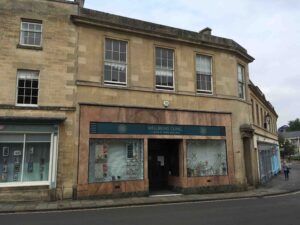
The work involves a lot of managing material, recording finds and keeping notes of sources. I have been cataloguing the photos on a spreadsheet – now 165 and still growing. I need 140 for the final book but keep finding new interesting ones. I haven’t even visited the WSHC – Wiltshire and Swindon History Centre yet; they have 79 boxes of Harris-related material. I need to take a look. I might miss a real gem for the book.
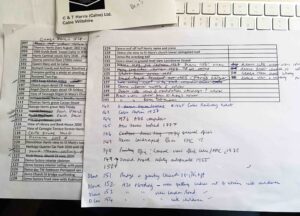
One of my greatest pleasures has been looking at early aerial photos of Calne – seeing how the town expanded as Harris grew. I’ve also enjoyed looking through pictures of the factory after the closure, abandoned buildings and rooms stripped down to a shell. I do love a good demolition picture too, and there are plenty of those. Those photographs are very atmospheric, sad but also quite beautiful. Heaps of rubble, skeletons of buildings and derelict sites; what lies beneath.
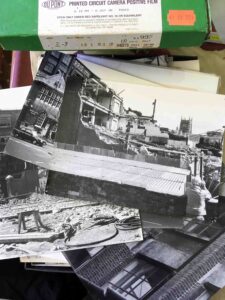
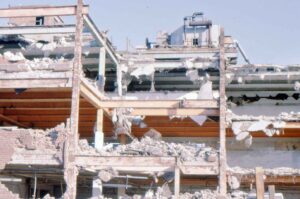
It’s hard to believe how the whole Harris site was eventually transformed by 2001, into a different town centre. The iconic library, flats, houses, and shops were built on the site. Not a sign of the busy, noisy, smelly giant of a factory, that had dominated the town for so long.
I hope that the book won’t be delayed for too long. I know from Facebook that Calne people love reading about their home town – and people from around the world with connections to Calne have a great feeling of nostalgia for the place and Harris in particular.
I shall just keep going, gathering material together and ordering it into some coherent story of the life of the factory which spanned over 200 years. And of course, there are loads of pictures of produce to drool over, even though I know now, how most of them were made. I may need to put a warning on the cover – ‘Not for vegans and those of a delicate disposition.’
